Seok Min Kim
EM-Network: Oracle Guided Self-distillation for Sequence Learning
Jun 14, 2023

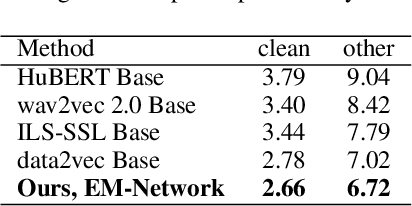
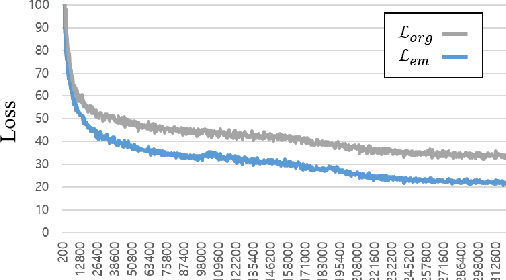
Abstract:We introduce EM-Network, a novel self-distillation approach that effectively leverages target information for supervised sequence-to-sequence (seq2seq) learning. In contrast to conventional methods, it is trained with oracle guidance, which is derived from the target sequence. Since the oracle guidance compactly represents the target-side context that can assist the sequence model in solving the task, the EM-Network achieves a better prediction compared to using only the source input. To allow the sequence model to inherit the promising capability of the EM-Network, we propose a new self-distillation strategy, where the original sequence model can benefit from the knowledge of the EM-Network in a one-stage manner. We conduct comprehensive experiments on two types of seq2seq models: connectionist temporal classification (CTC) for speech recognition and attention-based encoder-decoder (AED) for machine translation. Experimental results demonstrate that the EM-Network significantly advances the current state-of-the-art approaches, improving over the best prior work on speech recognition and establishing state-of-the-art performance on WMT'14 and IWSLT'14.
MCR-Data2vec 2.0: Improving Self-supervised Speech Pre-training via Model-level Consistency Regularization
Jun 14, 2023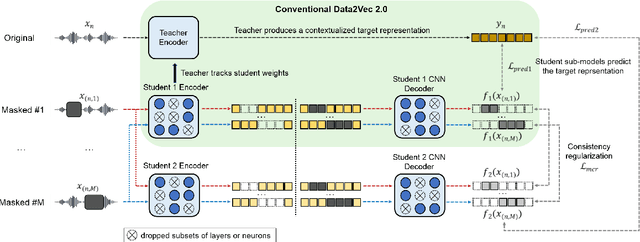

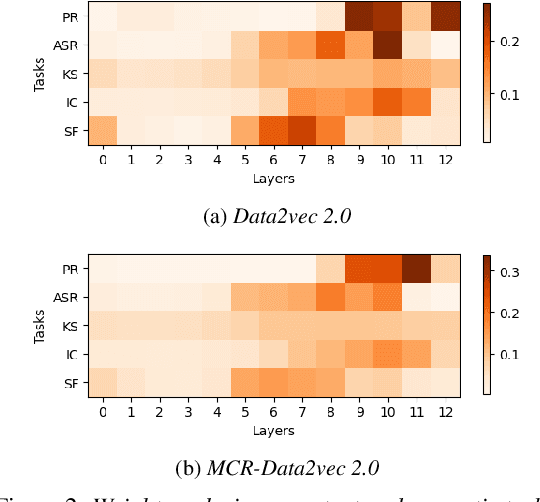
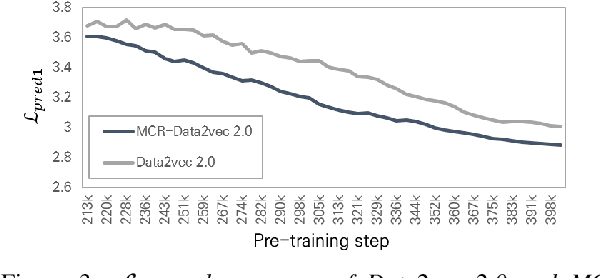
Abstract:Self-supervised learning (SSL) has shown significant progress in speech processing tasks. However, despite the intrinsic randomness in the Transformer structure, such as dropout variants and layer-drop, improving the model-level consistency remains under-explored in the speech SSL literature. To address this, we propose a new pre-training method that uses consistency regularization to improve Data2vec 2.0, the recent state-of-the-art (SOTA) SSL model. Specifically, the proposed method involves sampling two different student sub-models within the Data2vec 2.0 framework, enabling two output variants derived from a single input without additional parameters. Subsequently, we regularize the outputs from the student sub-models to be consistent and require them to predict the representation of the teacher model. Our experimental results demonstrate that the proposed approach improves the SSL model's robustness and generalization ability, resulting in SOTA results on the SUPERB benchmark.
Kosp2e: Korean Speech to English Translation Corpus
Jul 06, 2021Abstract:Most speech-to-text (S2T) translation studies use English speech as a source, which makes it difficult for non-English speakers to take advantage of the S2T technologies. For some languages, this problem was tackled through corpus construction, but the farther linguistically from English or the more under-resourced, this deficiency and underrepresentedness becomes more significant. In this paper, we introduce kosp2e (read as `kospi'), a corpus that allows Korean speech to be translated into English text in an end-to-end manner. We adopt open license speech recognition corpus, translation corpus, and spoken language corpora to make our dataset freely available to the public, and check the performance through the pipeline and training-based approaches. Using pipeline and various end-to-end schemes, we obtain the highest BLEU of 21.3 and 18.0 for each based on the English hypothesis, validating the feasibility of our data. We plan to supplement annotations for other target languages through community contributions in the future.
StyleKQC: A Style-Variant Paraphrase Corpus for Korean Questions and Commands
Mar 24, 2021
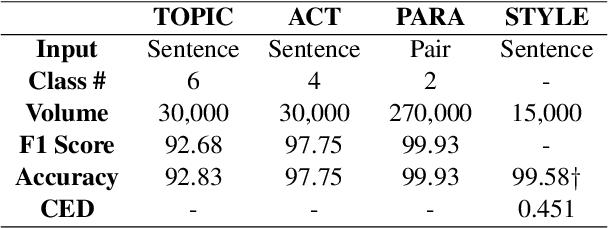
Abstract:Paraphrasing is often performed with less concern for controlled style conversion. Especially for questions and commands, style-variant paraphrasing can be crucial in tone and manner, which also matters with industrial applications such as dialog system. In this paper, we attack this issue with a corpus construction scheme that simultaneously considers the core content and style of directives, namely intent and formality, for the Korean language. Utilizing manually generated natural language queries on six daily topics, we expand the corpus to formal and informal sentences by human rewriting and transferring. We verify the validity and industrial applicability of our approach by checking the adequate classification and inference performance that fit with the fine-tuning approaches, at the same time proposing a supervised formality transfer task.
Machines Getting with the Program: Understanding Intent Arguments of Non-Canonical Directives
Dec 01, 2019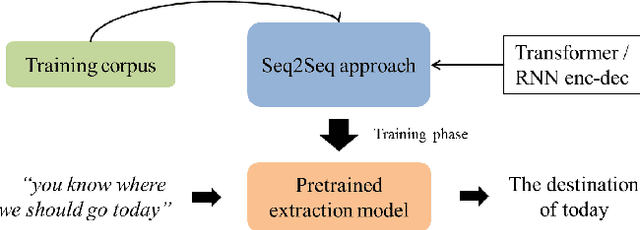

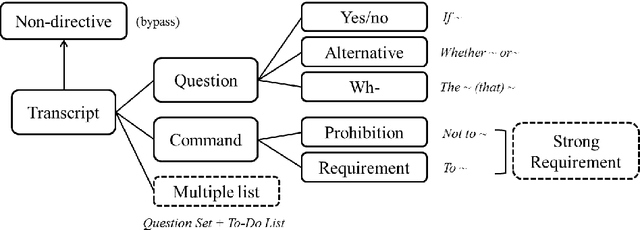
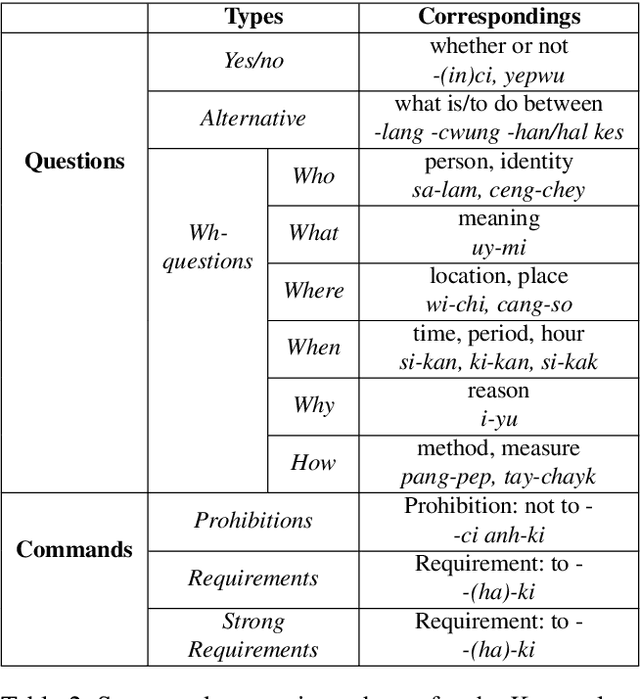
Abstract:Modern dialog managers face the challenge of having to fulfill human-level conversational skills as part of common user expectations, including but not limited to discourse with no clear objective. Along with these requirements, agents are expected to extrapolate intent from the user's dialogue even when subjected to non-canonical forms of speech. This depends on the agent's comprehension of paraphrased forms of such utterances. In low-resource languages, the lack of data is a bottleneck that prevents advancements of the comprehension performance for these types of agents. In this paper, we demonstrate the necessity of being able to extract the intent argument of non-canonical directives, and also define guidelines for building paired corpora for this purpose. Following the guidelines, we label a dataset consisting of 30K instances of question/command-intent pairs, including annotations for a classification task for predicting the utterance type. We also propose a method for mitigating class imbalance in the final dataset, and demonstrate the potential applications of the corpus generation method and dataset.
Investigating an Effective Character-level Embedding in Korean Sentence Classification
May 31, 2019

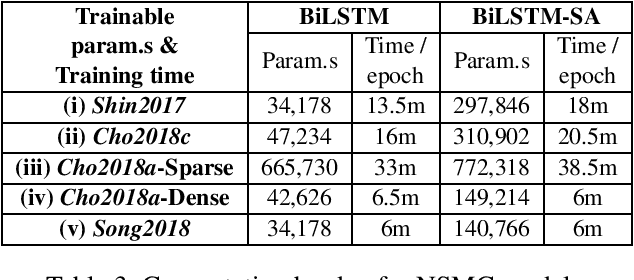
Abstract:Different from the writing systems of many Romance and Germanic languages, some languages or language families show complex conjunct forms in character composition. For such cases where the conjuncts consist of the components representing consonant(s) and vowel, various character encoding schemes can be adopted beyond merely making up a one-hot vector. However, there has been little work done on intra-language comparison regarding performances using each representation. In this study, utilizing the Korean language which is character-rich and agglutinative, we investigate an encoding scheme that is the most effective among Jamo-level one-hot, character-level one-hot, character-level dense, and character-level multi-hot. Classification performance with each scheme is evaluated on two corpora: one on binary sentiment analysis of movie reviews, and the other on multi-class identification of intention types. The result displays that the character-level features show higher performance in general, although the Jamo-level features may show compatibility with the attention-based models if guaranteed adequate parameter size.
On Measuring Gender Bias in Translation of Gender-neutral Pronouns
May 28, 2019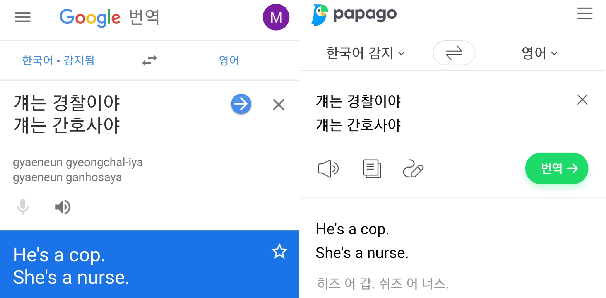

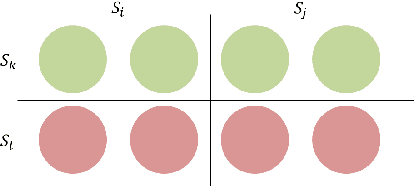
Abstract:Ethics regarding social bias has recently thrown striking issues in natural language processing. Especially for gender-related topics, the need for a system that reduces the model bias has grown in areas such as image captioning, content recommendation, and automated employment. However, detection and evaluation of gender bias in the machine translation systems are not yet thoroughly investigated, for the task being cross-lingual and challenging to define. In this paper, we propose a scheme for making up a test set that evaluates the gender bias in a machine translation system, with Korean, a language with gender-neutral pronouns. Three word/phrase sets are primarily constructed, each incorporating positive/negative expressions or occupations; all the terms are gender-independent or at least not biased to one side severely. Then, additional sentence lists are constructed concerning formality of the pronouns and politeness of the sentences. With the generated sentence set of size 4,236 in total, we evaluate gender bias in conventional machine translation systems utilizing the proposed measure, which is termed here as translation gender bias index (TGBI). The corpus and the code for evaluation is available on-line.
Speech Intention Understanding in a Head-final Language: A Disambiguation Utilizing Intonation-dependency
Nov 10, 2018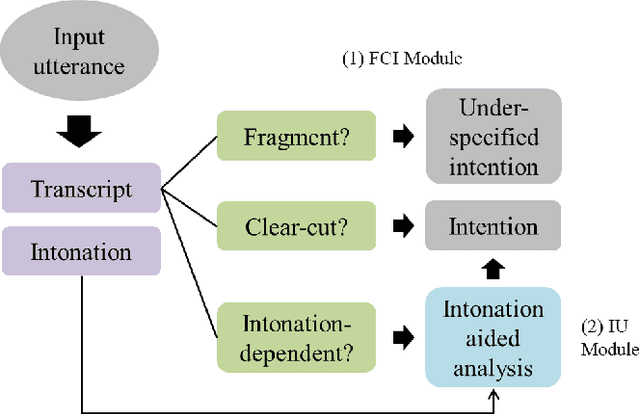
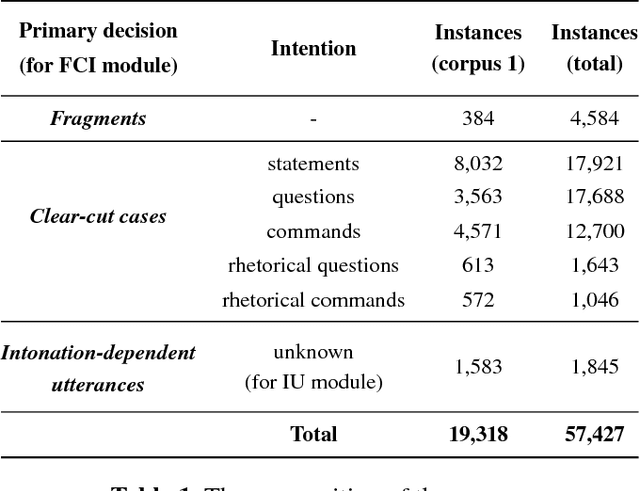
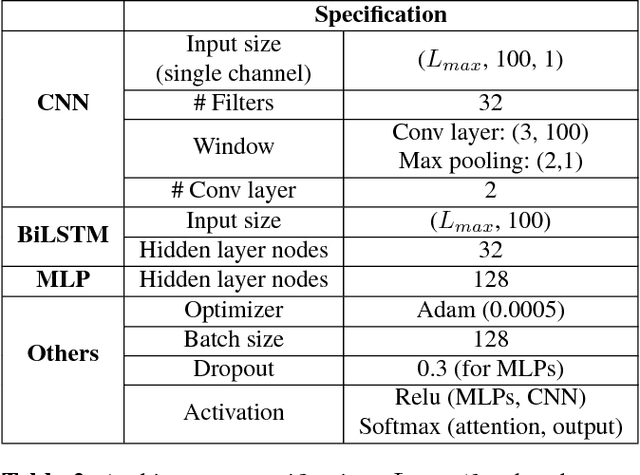
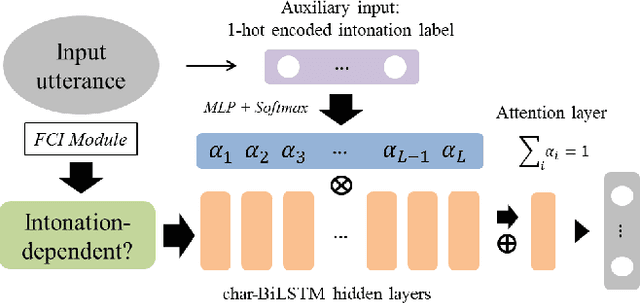
Abstract:For a large portion of real-life utterances, the intention cannot be solely decided by either their semantics or syntax. Although all the socio-linguistic and pragmatic information cannot be digitized, at least phonetic features are indispensable in understanding the spoken language. Especially in head-final languages such as Korean, sentence-final intonation has great importance in identifying the speaker's intention. This paper suggests a system which identifies the intention of an utterance, given its acoustic feature and text. The proposed multi-stage classification system decides whether given utterance is a fragment, statement, question, command, or a rhetorical one, utilizing the intonation-dependency coming from head-finality. Based on an intuitive understanding of Korean language which is engaged in data annotation, we construct a network identifying the intention of a speech and validate its utility with sample sentences. The system, if combined with the speech recognizers, is expected to be flexibly inserted into various language understanding modules.
 Add to Chrome
Add to Chrome Add to Firefox
Add to Firefox Add to Edge
Add to Edge